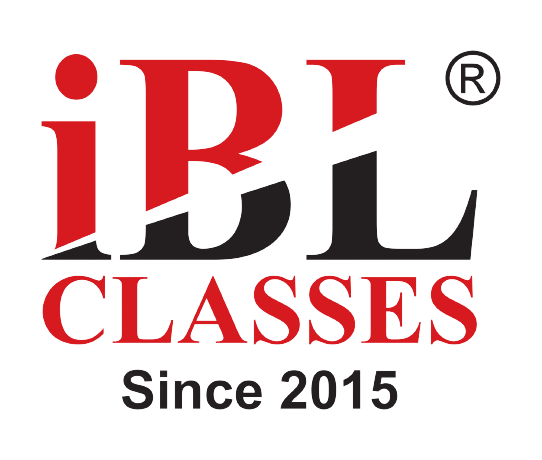Best Language Learning Methods and Strategies
Best Language Learning Methods and Strategies are here, Have you ever thought to yourself to learn a foreign language but it’s just too hard? Learning a new language can be an enriching experience. Language learning opens up countless opportunities, whether you want to communicate with people from different cultures, travel the world, or enhance your career prospects. However, choosing the right methods and strategies can greatly influence your progress and success. In this article, we will explore the ten best language learning methods and strategies to help you embark on your linguistic journey.
How to learn a new language
Keep some of these in mind and you’ll be ready to find an intensive language program before you know it!
Communicative language teaching (CLT)
This strategy is most likely the most prevalent English language education model in the world today. In part because it tries to place students in a range of real-life scenarios so that they can learn how to communicate in the real world using their language skills. As a result, educators tend to emphasize communicative fluency over accuracy, and sessions are more hands-on than theoretical.
This approach is distinguished by interactive and meaningful classroom activities, as well as the utilization of authentic source materials. Teachers are encouraged to give pupils as many opportunities as possible to give and receive meaningful communication. Personal experience is also commonly used in CLT courses.
Make New Friends
Start going to events if there is a group in your city that speaks the language you want to learn! One of the finest ways to learn a foreign language is through friendship, which is also the quickest way to become familiar with slang, accent, and mannerisms. You can gently lay a foundation for the language you want to learn by having casual conversations with your friends in the neighborhood’s cafés, pubs, and restaurants. Making friends who speak the language already (or are learning it right along with you) is fantastic since it will allow you to practice without feeling awkward or on the spot.
Content and language-integrated learning (CLIL)
The CLIL strategy entails studying one subject (for example, biology, science, or history) while also learning a language, such as English – effectively merging the two courses.
The demands of the first subject are prioritized over those of the target language in language instruction. As a result, it is crucial to ensure that the integration is evident and that students are engaged. Having said that, the CLIL approach does provide considerable chances for cross-curricular collaboration; it broadens language learning and can be utilized to re-engage previously disengaged pupils.
Tailor your learning to your language
Do some research on your target language once you’ve determined your goals and found someone to study with. Languages are not all built the same way, thus there is no one-size-fits-all approach to learning. What is the phonetic level of your language? If the language is extremely phonetic, meaning that each letter corresponds to only one sound, such as in Turkish or Spanish, use a classical learning technique that teaches both pronunciation and spelling.
You’ll also want to consider your personal language background. If you want to study French or Portuguese but already know Spanish, seek for a programme designed for Spanish speakers rather than English ones. Because French and Portuguese are so similar to Spanish, you’ll discover that a lot of learning will be much more intuitive for you than for other English speakers; if you attend a course or utilize an app designed for English speakers, you’ll find yourself far surpassing your colleagues and probably bored.
Seek Out Online Resources
The internet is an enchanted place. Look no further if you’re looking for the finest techniques to learn a foreign language! You can always rely on Google Translate, but why not use useful browser addons like Toucan?
What else can you do online to learn a language? You can communicate with other language learners by participating in online chat groups, watching YouTube videos, and reading articles. The internet is ready to assist you in achieving your foreign language learning objectives!
Grammar-Translation
This is a very traditional teaching method in which translation from the students’ mother tongue into the target language is prioritized. Students must memorize extensive lists of vocabulary as well as complex grammar structures and rules in order to succeed with this strategy.
The strategy prioritizes correctness over fluency and emphasizes the development of reading and writing skills over speaking skills. The disadvantage of this method is that it does not prepare students for spontaneous communication. Grammar drills, vocabulary assessments, and encouraging pupils to incorporate new grammar principles in standardized writing projects are common classroom exercises.
Audiolingualism
This method of instruction was created in response to some of the issues related to Grammar-Translation. As a result, courses are typically held in the target language, as this strategy intentionally prioritizes speaking and listening abilities.
Students usually repeat the teacher’s sentences (either face-to-face or through headphones in a language lab) until they have the pronunciation and rhythm correct. The educator rewards good work and immediately corrects faults.
Exchange of languages
You can study a language all you want, but if you’re not working to improve your fluency outside of repetition drills or singing along to your favourite Reggaeton song, you’ll never get there. Fortunately, free language exchange meetup groups have become commonplace in cities all over the world in recent years. And they’re the ideal settings to let go of your anxieties of making mistakes – everyone at these events is a language learner making mistakes, so they understand. Look for language programmes that give regular opportunities to converse with native speakers.
Try Online Courses (like IBL Classes!)
Check out IBL Classes for online language courses. IBL classes will help you advance your language learning. Select from Korean, Japanese, Chinese, Spanish, French, and more languages! Language teachers create their curricula, and the app has a built-in flashcard function. Furthermore, because acquiring a new language necessitates actually speaking it, IBL Classes delivers stories for you to read and say so you can perfect your skills faster!
The Natural Approach
According to supporters of this method, it recognizes and emphasizes the difference between learning and mastering a language. They see organization, textbooks, tools, and memorization of grammar or vocabulary lists as necessary for learning a language. The only requirement for learning a language is for teachers to establish an environment where pupils are constantly using, correcting, and recalling their target language.
Teachers emphasize interesting, comprehensible input (CI) and design low-anxiety settings primarily for use with beginning students. As a result, classes taught using the natural approach place little to no emphasis on correcting mistakes, practicing, or consciously learning grammar rules, and instead concentrate on helping students grasp communications in the target language.
How to create an effective strategy for learning a new language
Developing an effective method for learning a new language is a key step in the learning process, as we addressed in this piece. Developing your own approach entails considering all of the individual tactics we’ve explored thus far. Still confused? Here’s step plan to get you started:
- Determine your motivation and goals. Consider why you want to study the language and what you hope to achieve. Make your objectives specific and measurable. For instance, “I want to write a letter to my grandfather in Polish.” This will serve as a foundation for developing the best way to achieve this aim!
- Take it all in. Extend your learning beyond flashcards and conjugation tables by attempting to incorporate your new language into your daily life (for example, music, TV shows, TikTok feed, etc.).
- Make use of spaced repetition. A language cannot be learned in a single study session, just as Rome was not created in a day. Keep in mind what we’ve learned about spaced repetition and keep your study sessions brief, frequent, and tough.
- Practice, practice, and more practice. As much as possible, listen, read, write, and speak. Find parts of your daily routine where you can practice your new abilities in a low-risk environment.
Conclusion
Language learning can be an exciting adventure that enhances your cognitive abilities and cultural awareness. The ten best language learning methods and strategies mentioned above are powerful tools to help you achieve fluency and confidence in your target language. Embrace the diversity of language, stay committed to your goals, and enjoy the journey as you expand your horizons through multilingualism. Happy learning!



